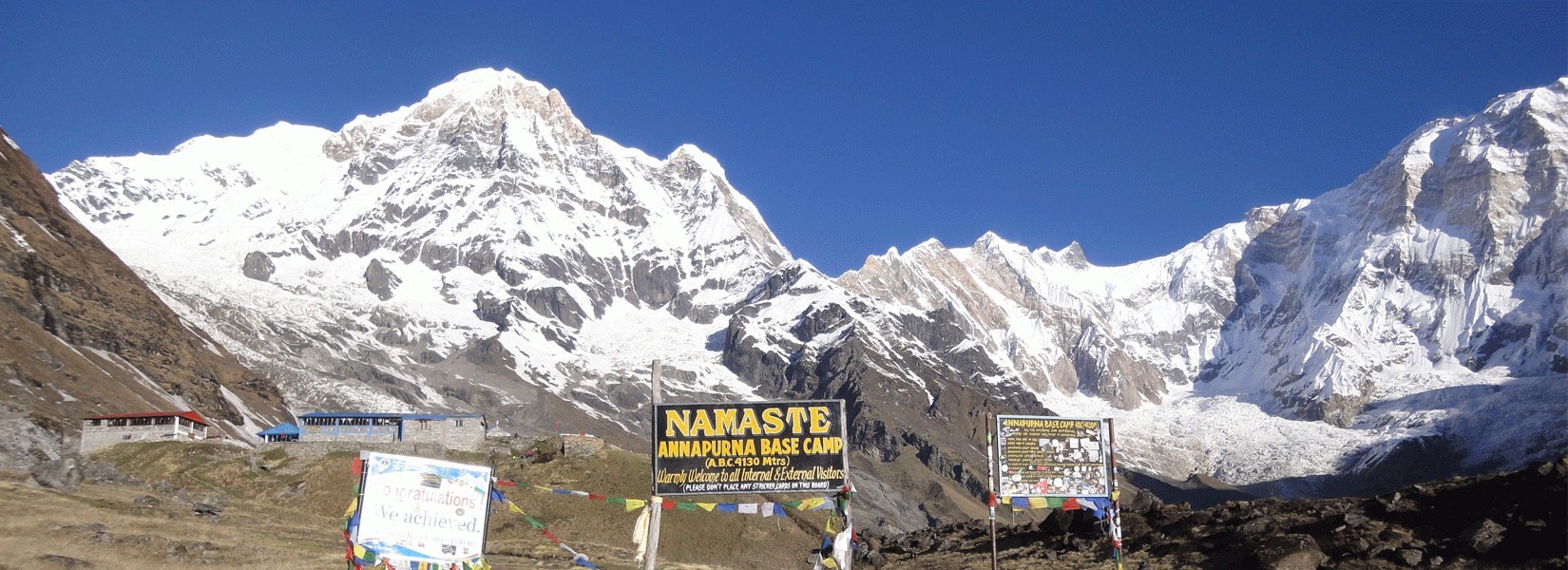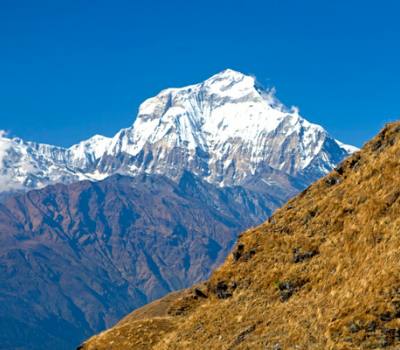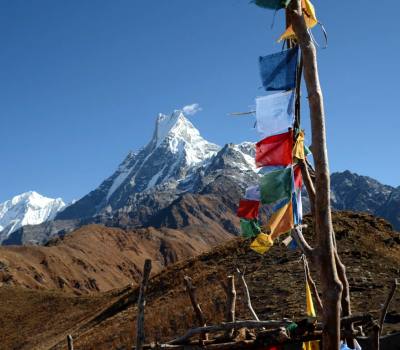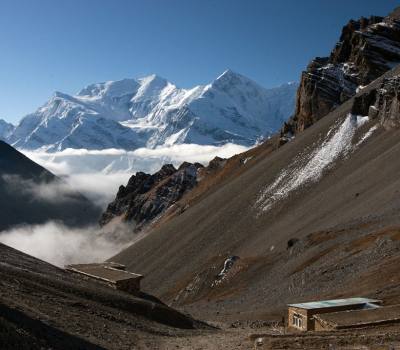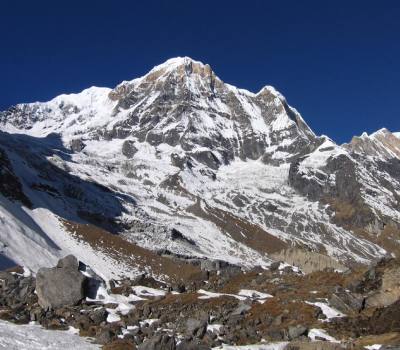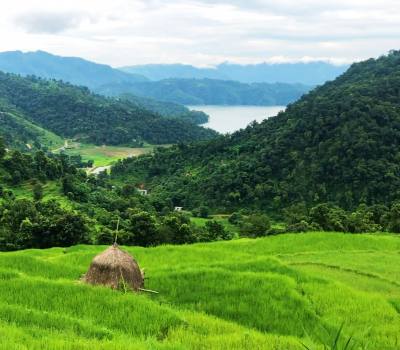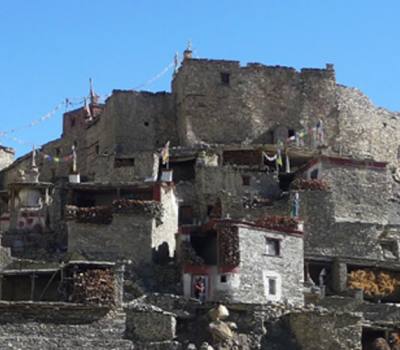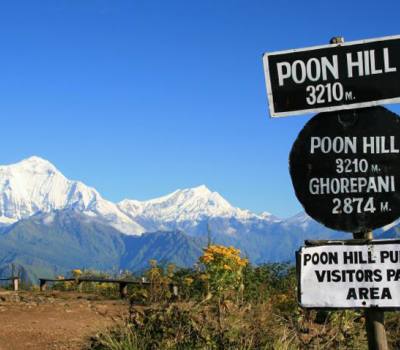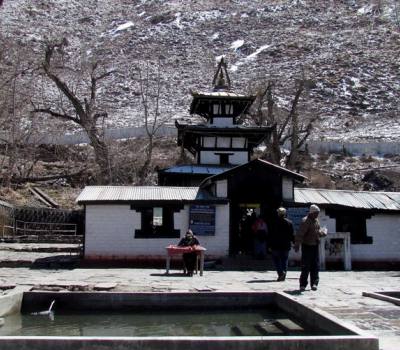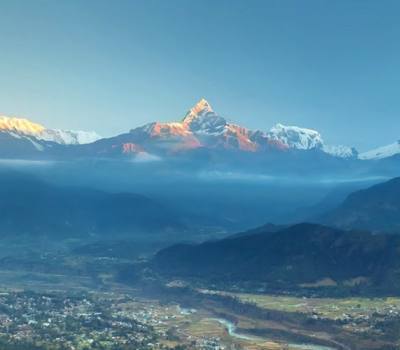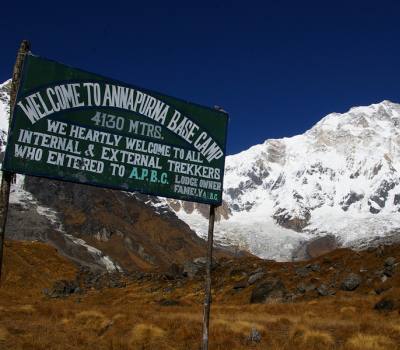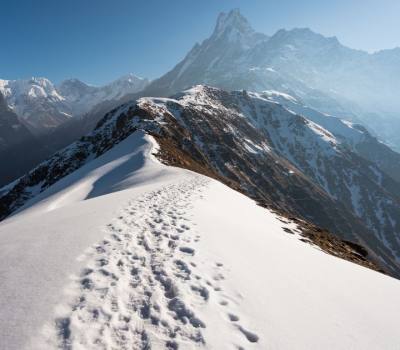Annapurna Base Camp trek 6 days cost
The 6-day Annapurna Base Camp (ABC) Trek is the perfect choice for adventurers seeking a quick yet thrilling journey to the heart of the Himalayas. This trek combines breathtaking mountain views, diverse landscapes, and rich cultural experiences in a short time. Ideal for those with limited time, the 6-day ABC trek takes you to the iconic Annapurna Base Camp (4,130m), surrounded by towering peaks like Annapurna I (8,091m) and the sacred Machapuchare (6,993m).
The route passes through charming Gurung villages, lush rhododendron forests, and high-altitude meadows. Along the way, trekkers can enjoy the natural hot springs at Jhinu Danda, making this trek a refreshing blend of nature, culture, and adventure. The moderate difficulty level of this trek makes it accessible for both novice and experienced trekkers, ensuring an unforgettable journey to the base of the Annapurna massif.
For those looking to experience the magic of the Himalayas in a shorter time frame, the 6-day Annapurna Base Camp trek offers the perfect blend of adventure and relaxation. Explore one of Nepal’s most famous trekking destinations and create memories that last a lifetime!
Trip Highlights of Annapurna Base Camp trek 6 days cost
-
Panoramic Views of the Himalayas:
- Experience breathtaking views of Annapurna I (8,091m), Machapuchare (6,993m), Hiunchuli, and other stunning peaks from Annapurna Base Camp.
-
Annapurna Base Camp (4,130m):
- Reach the iconic base camp surrounded by towering Himalayan giants, offering a 360-degree mountain panorama.
-
Machapuchare Base Camp:
- A scenic stop at Machapuchare Base Camp (3,700m), the gateway to Annapurna Base Camp, with stunning views of the sacred Machapuchare (Fishtail Mountain).
-
Cultural Experience:
- Trek through traditional Gurung and Magar villages like Jhinu Danda, Chhomrong, and Bamboo, immersing yourself in local culture and hospitality.
-
Lush Forests & Diverse Landscapes:
- Walk through dense rhododendron and bamboo forests, passing waterfalls and streams, showcasing Nepal’s rich biodiversity.
-
Natural Hot Springs at Jhinu Danda:
- Relax in the natural hot springs at Jhinu Danda, a perfect way to unwind after days of trekking.
-
Short & Intense Trek:
- This 6-day trek is ideal for those with limited time but seeking the ultimate Himalayan trekking experience.
-
Teahouse Accommodation:
- Stay in cozy teahouses along the trekking route, enjoying the warmth of the local people and traditional Nepalese meals.
Outline Itinerary:
- Day 01: Beautiful Drive from Pokhara (822m) to Siwai and bit further (1530m) and trek to Chomrong (2170m)
- Day 02: Chomrong (2170m) to Dovan (2600m)
- Day 03: Dovan (2600m) to Deurali (3230m) 5-6 hours
- Day 04: Deurali (3230m) to Annapurna Base Camp (4130m) 5 hours
- Day 05: Annapurna Base Camp (4130m) to Sinuwa (2360m) 6-7 hours
- Day 06: Sinuwa (2360m) to Siwai (2170m) and Drive to Pokhara
Detail Itinerary
- Day 01 :Beautiful Drive from Pokhara (822m) to Siwai and bit further (1530m) and trek to Chomrong (2170m) Beautiful drive from Pokhara (822m) to Siwai (1,530m), a scenic journey that takes approximately 3-4 hours. The drive offers stunning views of the lush countryside, terraced fields, and local villages, with the majestic Annapurna and Machapuchare peaks gracing the skyline. As you drive deeper into the Annapurna region, the landscape transforms into a peaceful retreat from the bustle of city life.
After reaching Siwai, the adventure continues with a trek to Chomrong (2,170m), a picturesque village nestled in the hills. This 4-5 hour trek takes you across the Chomrong Khola via a suspension bridge, followed by a steady ascent through terraced farms and vibrant rhododendron forests. Chomrong, a key stop on the Annapurna Base Camp trek, offers spectacular views of Annapurna South and Machapuchare, making it an ideal destination for nature lovers and trekkers alike.
This combination of a scenic drive and a rewarding trek makes the journey from Pokhara to Chomrong a perfect start to your Himalayan adventure. - Day 02 :Chomrong (2170m) to Dovan (2600m) After a restful night at a lodge in Chomrong, your journey continues towards the next checkpoint, Dovan. Dovan, situated at the base of a gorge, requires both ascending and descending as you make your way there, with a stop at Bamboo along the way.
The day starts with crossing the Chomrong Khola on a suspension bridge, followed by a steady ascent toward Sinuwa, a scenic village with stunning views. From Sinuwa, you will trek through lush forests, passing Khuldighar, before arriving at Bamboo. After reaching Bamboo, a short descent leads you to your final destination for the day, Dovan (2,600m).
This part of the Annapurna Base Camp Trek offers a mix of challenging climbs and breathtaking nature, making it a key highlight of your adventure. - Day 03 :Dovan (2600m) to Deurali (3230m) 5-6 hours The trek from Dovan (2,600m) to Deurali (3,230m) takes approximately 5-6 hours and offers a remarkable journey through dense forests and alpine landscapes. As you ascend, the vegetation changes, and the path becomes more rugged, providing a closer connection to the raw beauty of the Annapurna region.
Along the way, you'll pass serene waterfalls, bamboo groves, and sections of the Modi Khola river. The trail gradually climbs towards Himalayan Hotel before reaching Deurali, where the valley opens up, offering stunning views of the towering peaks. This section of the Annapurna Base Camp trek is known for its diverse natural beauty and serene atmosphere, making it a memorable part of the journey.
Rest and acclimatize at Deurali, preparing for the final ascent to Machapuchare Base Camp and Annapurna Base Camp. - Day 04 :Deurali (3230m) to Annapurna Base Camp (4130m) 5 hours The trek from Deurali (3,230m) to Annapurna Base Camp (4,130m) is one of the most exhilarating sections of the Annapurna Base Camp trek, taking around 4-5 hours. The ascent begins with a gradual climb toward Machapuchare Base Camp (3,700m), offering breathtaking views of Mount Machapuchare (Fishtail Mountain) and the surrounding Himalayan peaks.
As you continue from Machapuchare Base Camp, the trail opens up, revealing panoramic views of the Annapurna Sanctuary. Upon reaching Annapurna Base Camp, you’ll be rewarded with a stunning 360-degree view of some of the world’s highest peaks, including Annapurna I (8,091m), Annapurna South, Hiunchuli, and Gangapurna.
This section is a highlight of the trek, providing an unforgettable experience of the majestic Annapurna range. Reaching Annapurna Base Camp is a dream come true for trekkers, offering incredible photo opportunities and a sense of accomplishment. - Day 05 :Annapurna Base Camp (4130m) to Sinuwa (2360m) 6-7 hours The trek from Annapurna Base Camp (4,130m) to Sinuwa (2,360m) is a long but rewarding descent, taking around 6-7 hours. After enjoying the spectacular sunrise and panoramic views at Annapurna Base Camp, you’ll begin your journey back by retracing your steps.
The trail takes you through Machapuchare Base Camp and continues descending towards Deurali and Bamboo, where the lush green forests and waterfalls greet you once again. As you lose altitude, the change in vegetation becomes evident, with the return of rhododendron forests and bamboo groves. After reaching Bamboo, the trail includes a short ascent to Sinuwa, your final destination for the day.
This section of the Annapurna Base Camp trek provides a mix of scenic beauty and cultural encounters, as you pass through picturesque villages and immerse yourself in the tranquil surroundings of the Annapurna Conservation Area.
- Day 06 :Sinuwa (2360m) to Siwai (2170m) and Drive to Pokhara The final leg of your Annapurna Base Camp trek takes you from Sinuwa (2,360m) to Siwai (1,170m), followed by a scenic drive back to Pokhara. This day involves around 5-6 hours of trekking, as you descend through lush forests and charming villages, with the trail offering a blend of moderate ascents and descents.
After departing from Sinuwa, you'll first descend steeply to Chomrong Khola and then ascend to the village of Chomrong. From here, a gradual descent takes you past terraced fields and through the beautiful village of Jhinu Danda, famous for its hot springs. Continuing downhill, the trail eventually leads to Siwai, where your trek concludes.
At Siwai, you’ll board a vehicle for a 3-hour drive back to Pokhara. The drive is a relaxing end to your adventure, offering glimpses of the mountains and countryside you’ve just trekked through. This final day marks the end of your Annapurna Base Camp trek, allowing you to reflect on the incredible landscapes and cultural experiences you encountered along the way.
1. How difficult is the Annapurna Base Camp (ABC) trek in 6 days?
The ABC trek in 6 days is moderately challenging due to its steep ascents and descents, long trekking hours, and high-altitude sections. While it's shorter than the typical trek, it requires good physical fitness and stamina. Prior trekking experience is helpful but not mandatory.
2. What is the highest altitude reached during the trek?
The highest point on the trek is Annapurna Base Camp, which is at an altitude of 4,130 meters (13,550 feet).
3. What is the best time to do the Annapurna Base Camp trek?
The best times to trek to ABC are:
- Spring (March to May): Clear skies, pleasant temperatures, and blooming rhododendron forests.
- Autumn (September to November): Stable weather and excellent mountain views. Monsoon (June to August) and winter (December to February) are less favorable due to heavy rainfall or cold temperatures.
4. Do I need any permits for the Annapurna Base Camp trek?
Yes, you need the following permits:
- Annapurna Conservation Area Permit (ACAP).
- Trekkers’ Information Management System (TIMS) card.
5. Can beginners do the Annapurna Base Camp trek in 6 days?
The 6-day trek is more fast-paced and demanding than the standard route. While it’s not extremely technical, beginners should be physically fit and prepared for long trekking days and significant altitude changes.
6. How many hours do we trek each day?
On average, you will trek for 5-7 hours each day, depending on the day’s itinerary and your pace.
7. What type of accommodation is available during the trek?
Accommodation is in teahouses/lodges, which are basic but comfortable. Rooms typically have twin beds, and you’ll have access to simple meals (Nepalese, Indian, and continental).
8. Are there any risks of altitude sickness?
Yes, there is a risk of altitude sickness, especially after crossing 3,000m. The fast pace of the 6-day itinerary may make acclimatization difficult. It's important to stay hydrated, avoid alcohol, and ascend gradually.
9. What kind of food is available during the trek?
Teahouses offer a variety of meals, including Nepali, Tibetan, and Western dishes. Common foods include dal bhat (lentil soup with rice), noodles, soups, and pasta. Vegetarian meals are widely available.
10. Is drinking water available during the trek?
Yes, bottled and filtered water is available in teahouses. It's recommended to carry water purification tablets or a filtration system to purify tap or stream water along the way.
11. Do I need to hire a guide or porter?
While the trail is well-marked, hiring a guide can enhance your experience by providing insights into the local culture, history, and environment. Porters can carry your heavy bags, allowing you to trek more comfortably.
12. What should I pack for the 6-day Annapurna Base Camp trek?
Essentials include:
- Warm clothing (layers, jacket, gloves, hat).
- Trekking boots and socks.
- Waterproof gear (jacket and pants).
- Trekking poles, water bottle, sunscreen, sunglasses, first aid kit, and a headlamp.
13. Is travel insurance necessary for the trek?
Yes, it is highly recommended to have travel insurance that covers trekking at high altitudes and includes emergency evacuation.
14. Is Wi-Fi available during the trek?
Some teahouses offer Wi-Fi, but the connection may be slow and unreliable. It's best to expect limited communication during the trek.
15. How much does the 6-day Annapurna Base Camp trek cost?
The cost varies depending on the package, services, and trekking agency you choose. On average, it ranges from USD 400 to 600, including permits, accommodation, meals, and guide/porter services.
Quick Enquiry
Key Information
-
Trip Cost US$ 375
-
Trip Duration 6 Days
-
Destination Nepal
-
Trip Difficulty Moderate
-
Trip Style Trekking
-
Accomodation Hotel + Lodges
-
Max Altitude 4130 m
| No of people | Price P.P |
| 1-1 Pax | US$ 375 |
| 2-4 | US$ 370 |
| 6-8 | US$ 365 |
| 10-12 | US$ 358 |
Similar Trips
-
Khorpa Danda Trek Annapurna Dhaulagiri Community Trek
DURATION: 15 Days -
Mardi Himal Trek
DURATION: 11 Days -
Annapurna Circuit Trek cost
DURATION: 19 Days -
Short Annapurna Base Camp
DURATION: 10 Days -
Royal Trek
DURATION: 9 Days -
Nar Phu Valley Trek
DURATION: 19 Days -
Ghorepani Poon Hill Trek cost
DURATION: 10 Days -
Jomsom Muktinath Trekking
DURATION: 11 Days -
Dhampus Sarangkot Trek
DURATION: 8 Days -
Annapurna Base Camp Trek
DURATION: 15 Days -
Mardi Himal Trek 5 days cost
DURATION: 5 Days

